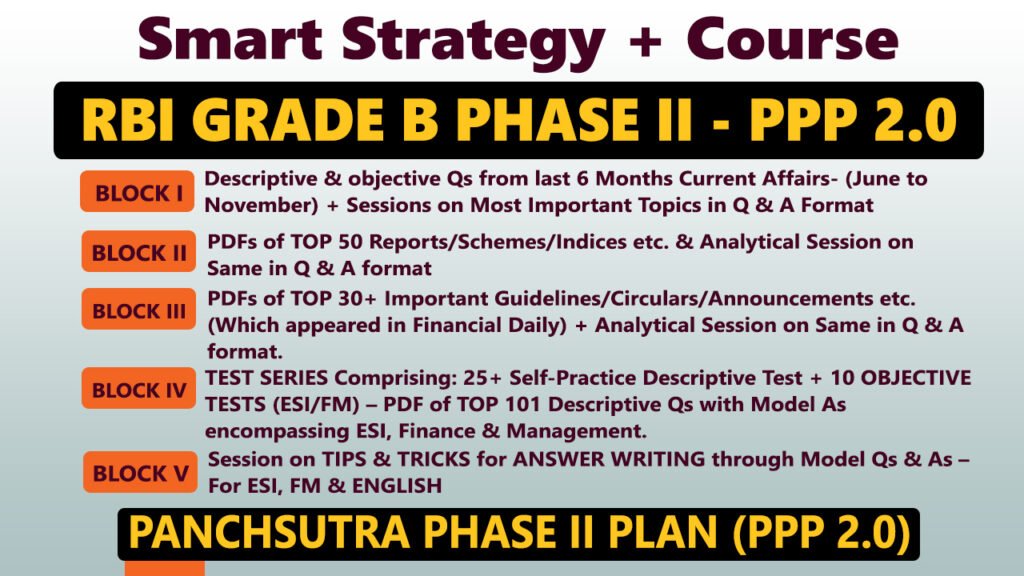Daily Current Affairs Quiz
4 September, 2025
National Affairs
1. GST 2.0 Reforms
Source: Indian Express & Economic Times
Context:
On September 3, 2025, the GST Council, chaired by Union Finance Minister Nirmala Sitharaman, held its 56th meeting which lasted over 10 hours. The meeting marked the biggest overhaul of the eight-year-old Goods and Services Tax (GST) regime, approving the much-awaited GST 2.0 reforms.
Slab Rationalisation
- Previous Structure: 5%, 12%, 18%, 28%
- New Structure (from 22 Sept 2025):
- 5% (Merit rate) – essential/common goods & services
- 18% (Standard rate) – general goods & services
- 40% (Demerit rate) – sin/super luxury goods (tobacco, cigarettes, pan masala, big cars, etc.)
Rate Reductions for Common & Middle-Class Items
0% (Exempted)
- Food items: Ultra-high temperature (UHT) milk, paneer, Indian breads (roti, chapati, paratha), pizza bread, khakra.
- Education item: Erasers.
- Insurance: All life insurance & health insurance policies (individual, family floater, senior citizens, ULIPs, endowment).
- Healthcare: 33 life-saving medicines.
5% (Reduced from 12–18%)
- Household essentials: Hair oil, soaps, shampoos, toothbrush, toothpaste, bicycles, tableware, kitchenware.
- Food & FMCG: Packaged juices, butter, cheese, condensed milk, pasta, coconut water, soya milk drinks, nuts, sausages, namkeens, sauces, noodles, chocolates, coffee.
- Medical: Medical oxygen, gauze, bandages, diagnostic kits.
- Others: Bio-pesticides, bio-menthol, handicrafts, leather goods, granite & marble blocks.
- Electric Vehicles (EVs): retained at 5%.
- Gyms, salons, barbers, yoga centres: reduced to 5% from 18%.
18% (from 28% or 12%)
- White goods: Air conditioners, TVs, dishwashers.
- Cement.
- Automobiles:
- Small cars (≤1200cc petrol / ≤1500cc diesel, ≤4m length).
- Motorcycles (<350cc).
- Automotive parts.
40% (Demerit Rate)
- Tobacco, cigarettes, pan masala.
- Big cars/Super luxury vehicles.
Structural Reforms
- Inverted Duty Structure corrected:
- Manmade fibre: 18% → 5%
- Manmade yarn: 12% → 5%
- Fertiliser inputs (sulphuric acid, nitric acid, ammonia): 18% → 5%
- Ease of Doing Business:
- Automated GST refunds.
- Simplified MSME registration.
Fiscal Impact
- Net revenue implication: ₹48,000 crore (FY24 base).
- Consensus-based decision despite states’ revenue loss concerns (~₹80,000 cr – ₹1.5 lakh cr).
Significance
- Major move towards simplified GST 2.0.
- Relief for common man, MSMEs, labour-intensive industries, farmers.
- Boosts compliance, reduces disputes & litigation.
- Corrects duty structure distortions.
- Encourages demand growth while ensuring fiscal sustainability.
2. ARTHA Financing Framework
Source: ET
Context:
The government is set to launch ARTHA, a financing framework for repurposing de-coaled mines. Launch will take place during the Star Rating Awards Ceremony for Coal and Lignite Mines in Mumbai.
About ARTHA
- Full Form: Yet to be officially expanded, but referred to as a green financing framework.
- Purpose: To facilitate reuse and repurposing of de-coaled mines.
- Approach: Aims to support sustainable, responsible mine closure and post-mining land use.
Significance
- Environmental: Promotes green transition and responsible land reuse.
- Economic: Unlocks potential for new industries and livelihood opportunities on repurposed mine land.
- Policy: Part of India’s broader sustainability and energy-transition goals.
Banking/Finance
1. Long-Duration Debt Mutual Funds Hit by Rising G-Sec Yields
Source: BS
Context:
Long-duration debt mutual funds (MFs) have seen a sharp fall in returns due to a surge in government securities (g-sec) yields. Investors in dynamic bond funds and g-sec funds with exposure to long-maturity papers bore the maximum impact.
What are Long-Duration Debt Mutual Funds (MFs)?
- Debt mutual funds that invest primarily in long-term fixed-income instruments like government securities (G-secs), corporate bonds, debentures, etc., with a maturity period of more than 7 years.
- Objective: They aim to generate stable, predictable returns over the long term, mainly through interest income and potential capital gains from bond price appreciation.
- Risk Profile: These funds are highly sensitive to interest rate changes (measured by duration). A small movement in interest rates can cause significant changes in their Net Asset Value (NAV).
What are Government Securities (G-secs)?
- Debt instruments issued by the Government of India to borrow money.
- Types:
- Treasury Bills (T-bills) – short-term (<1 year).
- Government Bonds – long-term (5–40 years).
- Safety: Considered risk-free as they carry a sovereign guarantee.
- Yield: The return an investor earns from holding the security (interest/coupon + capital appreciation).
Current Situation?
- Recently, g-sec yields have surged (gone up) due to:
- Higher inflation concerns.
- RBI’s monetary stance (less chance of rate cuts soon).
- Higher government borrowing needs.
- When bond yields rise, bond prices fall. Since long-duration funds are most sensitive to yield changes, their returns have dropped sharply.
Impact of Rising G-sec Yields on Long-Duration Debt MFs
On Investors
- NAV Decline: The market value of bonds in these funds falls, leading to lower NAV and poor short-term returns.
- Higher Volatility: Long-term funds face larger mark-to-market (MTM) losses.
- Better Entry Opportunity: For new investors, higher yields mean future potential returns improve, as funds can reinvest at higher interest rates.
On Economy
- Higher Borrowing Cost: Government pays more to borrow, which may crowd out private sector credit.
- Bond Market Adjustment: Investors may prefer safer g-secs over risky debt, tightening liquidity for corporates.
On Mutual Fund Industry
- Possible redemptions from risk-averse investors.
- Fund managers may adjust portfolios by reducing duration to limit volatility.
2. Variable Rate Reverse Repo (VRRR) Auction
Context:
The Reserve Bank of India (RBI) plans to conduct an eight-day variable rate reverse repo (VRRR) auction on Thursday aimed to drain ₹ 1.5 trillion from the banking system.
What is Variable Rate Reverse Repo (VRRR)?
- A short-term liquidity absorption tool used by the RBI to take out excess liquidity from the banking system.
- Mechanism: Banks park their surplus funds with the RBI for a specified period (e.g., 7 or 14 days). The interest rate is determined through an auction (hence “variable rate”).
- Objective: To manage liquidity, control inflationary pressures, and align short-term rates with the policy repo rate.
Difference Between VRR and VRRR
| Feature | VRR (Variable Rate Repo) | VRRR (Variable Rate Reverse Repo) |
|---|---|---|
| Purpose | Inject liquidity into system | Absorb liquidity from system |
| Flow of Money | RBI → Banks | Banks → RBI |
| Collateral | Banks give G-secs to borrow funds | Banks deposit surplus cash |
| Impact | Eases shortage, reduces interest rates | Controls excess, supports inflation control |
Why is RBI Conducting this Auction?
- To drain ₹1.5 trillion excess liquidity from the banking system.
- Context:
- Banks currently have surplus liquidity due to government spending, deposit inflows, or RBI’s previous operations.
- Excess liquidity can lead to lower short-term interest rates, fueling inflation or creating asset bubbles.
- RBI conducts VRRR auctions to stabilize money market rates close to the repo rate.
Impact of VRRR Auction
On Banks
- Surplus liquidity gets parked with RBI → less cash for lending in short-term markets.
- Short-term money market rates (like call money rate, TREPS) may rise closer to policy repo rate.
On Economy
- Helps control inflationary pressures by reducing excess money supply.
- May tighten short-term liquidity, making borrowing slightly costlier for corporates and NBFCs.
On Investors
- Higher short-term rates → better yields on money market instruments (CPs, CDs, T-bills).
- Bond market may see some pressure if liquidity tightness continues.
3. Bank of Baroda Launches ‘bob Digi Udyam’ Collateral-Free Digital Financing Scheme
Source: BL
Context:
State-owned Bank of Baroda (BoB) announced the launch of bob Digi Udyam – a digital, collateral-free lending platform offering Micro and Small Enterprises (MSEs) quick access to working capital loans above ₹10 lakh to ₹50 lakh.
Purpose
- To provide working capital support through Cash Credit (CC) and Overdraft (OD) facilities.
Loan Features
- Loan Amount: ₹10 lakh – ₹50 lakh
- Tenure: 1 year
- Collateral: Not required (collateral-free).
- Coverage: Loans secured under Credit Guarantee Fund Trust for Micro and Small Enterprises (CGTMSE).
Digital Process
- Fast Sanction: Provisional sanction letter issued within minutes of application.
- Final Approval: Processed through TEJAS Loan Origination & Processing System (BoB’s digital platform).
- Modes of Application:
- Do-It-Yourself (DIY) online application.
- Assisted mode at bank branches.
Agriculture
1. Kapas Kisan App
Source: PIB
Context:
On 2 September 2025, Union Minister of Textiles Shri Giriraj Singh launched the Kapas Kisan mobile app, developed by the Cotton Corporation of India (CCI) under the Ministry of Textiles, in New Delhi. The app aims to digitize cotton procurement under the Minimum Support Price (MSP) scheme, empowering farmers with transparency and efficiency in the procurement process.
About Kapas Kisan App
- Developer: Cotton Corporation of India (CCI), Ministry of Textiles
- Launched by: Union Minister of Textiles, Shri Giriraj Singh
- Purpose: To streamline cotton procurement under the MSP scheme and protect farmers from distress sales.
Features
- Self-Registration: Farmers can securely register to sell cotton under MSP.
- Slot Booking: Digital scheduling at procurement centres to reduce waiting time & crowding.
- Payment Tracking: Real-time status updates on payments directly linked with Aadhaar & NACH.
- Quality & Quantity Updates: Farmers get updates on quality assessment and accepted quantity.
- User-Friendly Interface: Supports multiple Indian languages for easy access.
Benefits
- Ensures timely payments and transparency.
- Reduces manual paperwork and waiting time at procurement centres.
- Safeguards farmers from distress sales through assured MSP procurement.
- Aligns with the Digital India vision by digitizing agricultural procurement.
Facts To Remember
1. India defeats Bahrain in AFC u-23 Asian Cup qualifiers
India began its AFC under-23 Asian Cup qualifiers on a winning note with a 2-0 victory over Bahrain at the Suheim bin Hamad Stadium in Doha.
2. Elavenil Valarivan
Elavenil Valarivan was one of the star performers in the recent Asian shooting championship in Kazakhstan, as she won the women’s air rifle gold, and the mixed air rifle gold with Arjun Babuta.
3. Citibank gets new co head for investment banking in Apac
US-based Citibank on Wednesday said it has appointed Kaustubh Kulkarni asco-head of its investment banking coverage for Japan, Asia North and Australia, and Asia South (Asia Pacific, or Apac).
4. RBI clears reappointment of R Gandhi as Yes Bank Chairman till 2027
Private sector lender Yes Bank on Tuesday said the Reserve Bank has approved the reappointment of former RBI Deputy Governor R Gandhi as non-executive chairman of the bank.
5. Union Cabinet Approves ₹1,500-Crore Incentive Scheme for Recycling of Critical Minerals
The Union Cabinet on Wednesday approved a ₹1,500 crore incentive scheme to promote recycling of e-waste and battery waste for the extraction of critical minerals, a move aimed at strengthening India’s supply chain resilience in the sector.



















